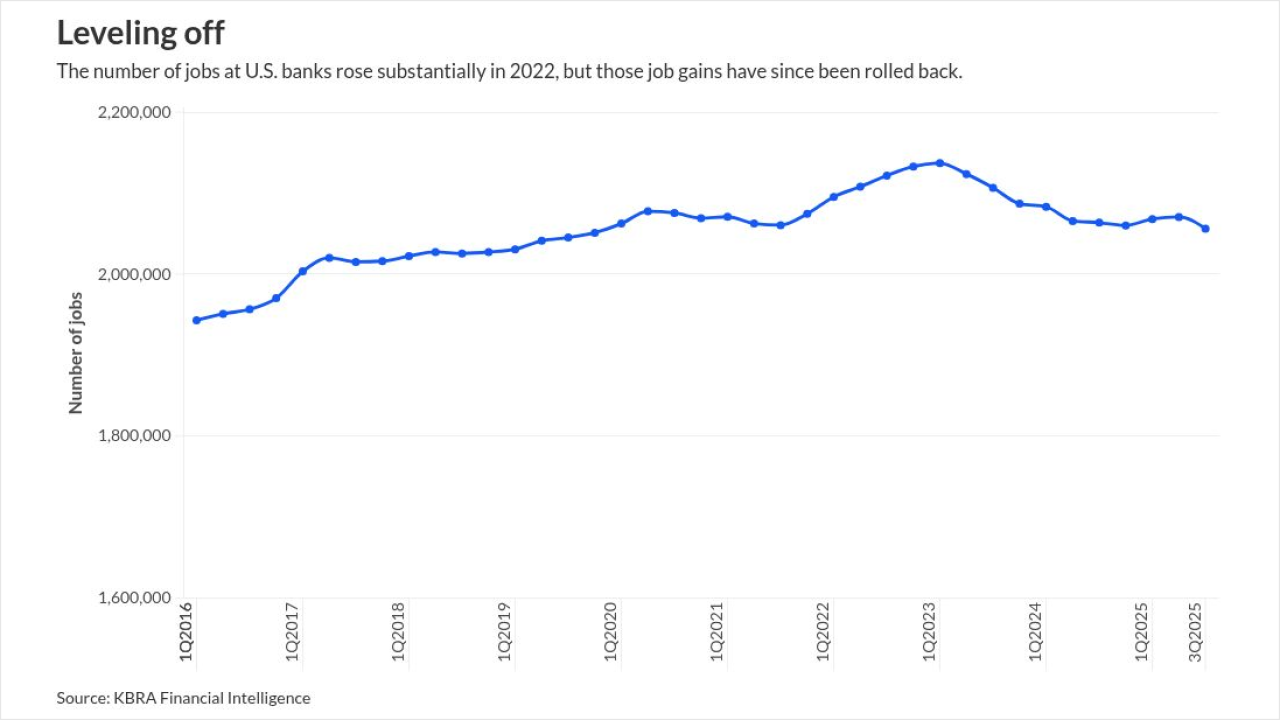

WASHINGTON — In yet another sign of the volatility of the past decade, the news from the Federal Deposit Insurance Corp.'s latest update on industry health might be just how normal banking was in the fourth quarter.
Banks are not taking the aggressive approach that characterized the real estate bubble nor are they sitting on their hands chastened by worries and risk. There are plenty of concerns out there, including potential fears for commercial loans over the energy slowdown. Institutions are setting aside more loss reserves. But loans are still growing — by a significant clip — while big institutions enjoyed an immediate benefit from higher interest rates.
"Revenue and earnings were higher than a year ago, loan growth improved, fewer institutions were unprofitable, and the number of banks on the 'problem list' fell below 200 for the first time in more than seven years," FDIC Chairman Martin Gruenberg said Tuesday at the release of the Quarterly Banking Profile.
-
The Federal Deposit Insurance Corp.'s third-quarter industry update pointed to signs of banks expanding their risk profiles despite slow revenue growth.
November 24 -
The Federal Deposit Insurance Corp.'s second-quarter industry update showed steadily rising loan balances making up for persistently tight net interest margins.
September 2 -
Community banks had a banner first quarter, federal regulators said Wednesday but it may come at a problematic time, politically speaking. The Quarterly Banking Profile may only deepen some lawmakers concern that small banks do not need regulatory relief if they are performing so well.
May 27
Industry representatives also touted the good news, focusing on loan growth.
"Lending is the big story as banks of all sizes steadily increase their loans to small, medium and large businesses," said James Chessen, the chief economist of the American Bankers Association. "Net income reached record levels, which reflects a growing economy and careful expense management by banks."
Chessen noted that banks level of capital was $1.8 trillion in 2015 — a 3.5% increase from the previous year and a 25% increase from their post-recession level.
"That's a significant increase in capital, and now banks are focused on how to deploy that … in good-quality loans," Chessen said in an interview.
But there were still plenty of challenges ahead, including continued uncertainty over interest rates and remaining worries about the energy sector.
Chargeoffs have largely returned to their pre-crisis level, but quarterly chargeoffs rose 7% from a year earlier to $10.6 billion, the first such increase in over five years, led by a 43% increase commercial and industrial loan chargeoffs.
"The increase in chargeoffs was led by commercial and industrial loans, where low oil prices have put pressure on energy sector borrowers," Gruenberg said. "The remaining increase was in consumer loan portfolios, where credit losses are tracking consumer loan growth."
The energy sector's struggles also appeared to have a hand in banks' risk projections. Loss provisions rose to a three-year high, increasing 45.5% from a year earlier to $12 billion. It was the sixth straight quarter with such an increase.
"We believe that some of the increase in loss provisions also is attributable to stress in the energy sector," Gruenberg said.
The protracted oil glut could have an impact on regional and community banks in certain areas, the FDIC chief warned.
"Some of the larger exposure is in the regional banks," he said. "I think for the community banks it's less of an issue of direct exposure to the energy sector than to the community banks operating in regions of the country whose local economies may be impacted."
The FDIC also said the industry should be careful in handling interest rate and credit risk. Although the industry's average net interest margin grew slightly to 3.13% in the fourth quarter — the first time in five years it hasn't declined — the improvement happened only at big banks that were better positioned to take advantage of the Federal Reserve's interest rate hike in December. Just 45% of all institutions reported a higher margin.
"The net interest margin story is not getting better," Jaret Seiberg, an analyst at Guggenheim Securities, said in a note to clients.
Gruenberg said the "uncertainty in the environment and further actions the Fed may or may not take is sort of contributing to uncertainty in regards to projection to earnings generated by the industry."
But consistent with a relatively normal credit environment, banks are still taking risks while reserving for possible losses. The FDIC said provisions were higher than chargeoffs for the first time in six years. And loan growth accelerated: Total loans rose 2.3% from the previous quarter, to $8.84 trillion.
"The industry has largely moved beyond the post-crisis recovery phase to a more normal phase of the credit cycle where reserve balances are once again increasing in line with the growth in loan portfolios," Gruenberg said.
Overall, net income rose 11.9% to $40.8 billion year over year in the fourth quarter. The percentage of unprofitable institutions was 4.61%, down from 6.27% in 2014.
"The industry has its eyes wide open on the potential risk," Chessen said.
The Deposit Insurance Fund ratio reached 1.11% in the fourth quarter. Gruenberg said he expected it to reach 1.15% this year, which would lead to a reshuffling of assessment rates between smaller and larger banks.





